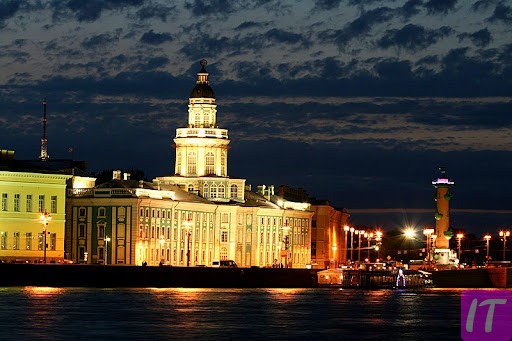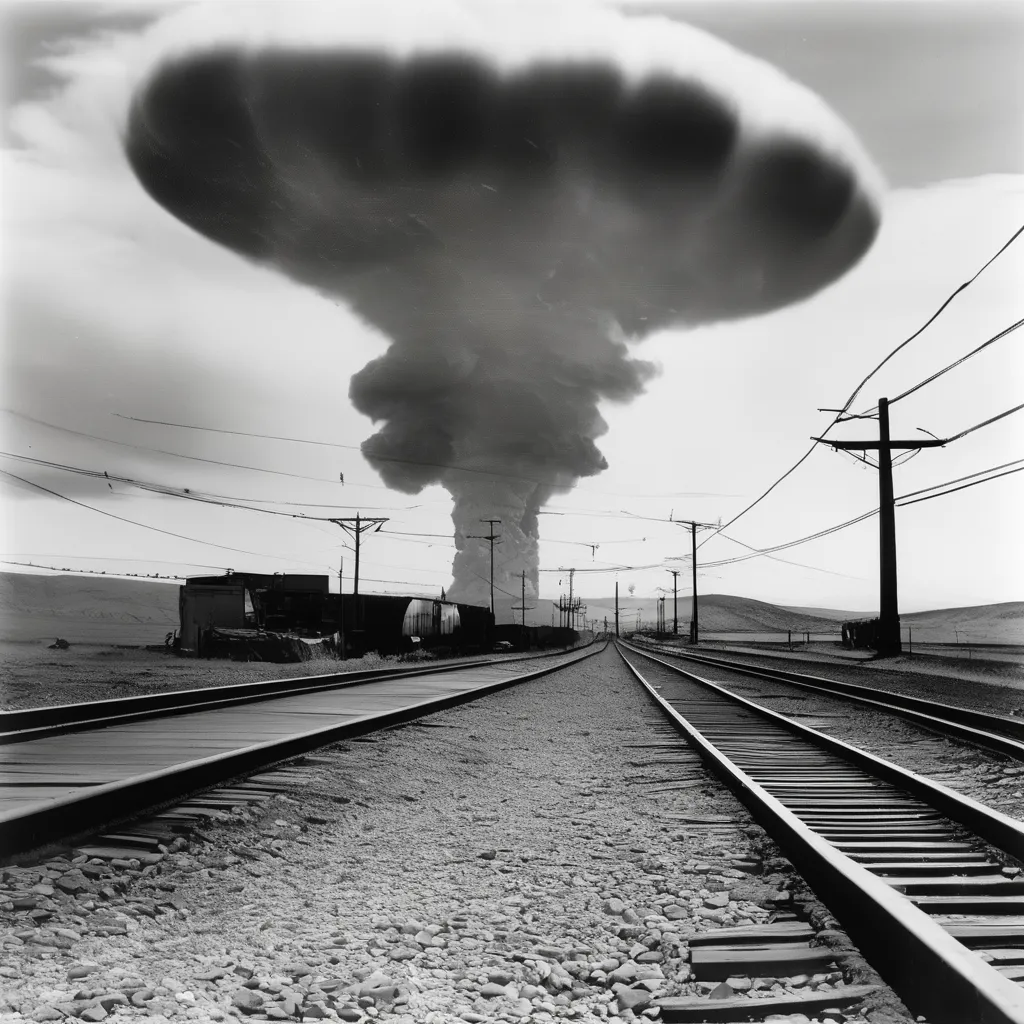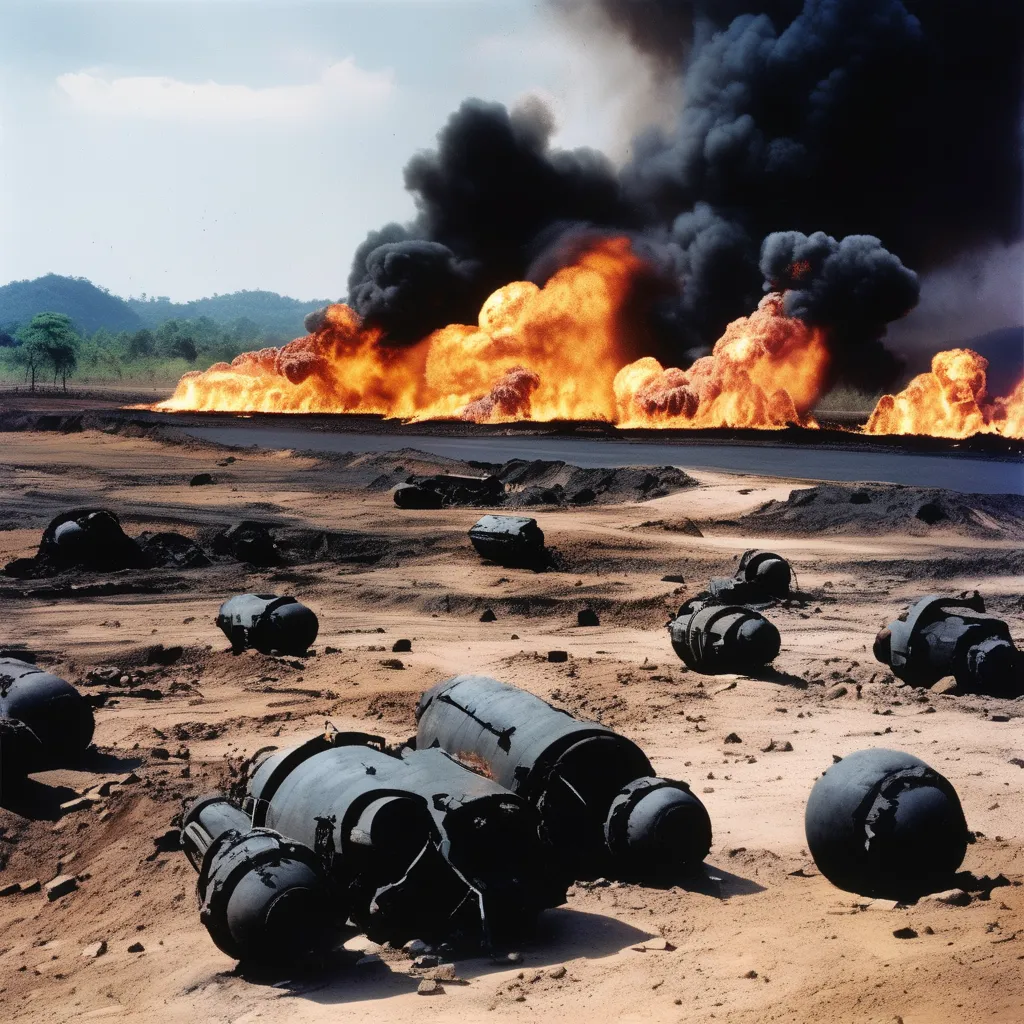Vasilyevsky Island: A Comprehensive Exploration
Vasilyevsky Island, located in the heart of St. Petersburg, Russia, is a site of immense historical, cultural, and economic significance. As one delves into the history of this remarkable island, a tapestry of narratives unfolds, showcasing its vital role in the development of St. Petersburg and, by extension, the Russian Empire. This article provides an in-depth exploration of Vasilyevsky Island, investigating its geographical importance, architectural marvels, cultural hubs, and more.
Introduction to Vasilyevsky Island: Historical Overview
Vasilyevsky Island has a storied history that dates back to the early 18th century. It was initially envisioned by Peter the Great as the city center of St. Petersburg. The island was formally established as part of St. Petersburg in 1710. Since then, it has evolved from a largely undeveloped marshland into a bustling hub of trade, culture, and academia. Over the centuries, the island has witnessed numerous historical events, including the Russian Revolution and various stages of urban development.
Throughout its history, Vasilyevsky Island has played a crucial role in shaping the trajectory of St. Petersburg. From its early days as a fledgling settlement under Peter the Great to its modern status as a vibrant district, the island serves as a microcosm of the city’s broader historical narrative. The architectural development of Vasilyevsky Island is a testament to the changing tastes and powers that have shaped St. Petersburg over the centuries.
Peter the Great’s vision for Vasilyevsky Island included an ambitious urban plan to emulate the grandeur of European cities. His aspirations saw the island’s development as a crucial aspect of his broader reforms, which sought to modernize and Westernize Russia. The earliest constructions on the island were strategically aligned with Peter’s vision of creating not only a functional space but also a monumental cityscape.
Historical documentation reveals that Vasilyevsky Island was intended to host key governmental and administrative buildings. Important state structures, including colleges and official residences, were erected, reflecting the island’s integral role in governance. The earliest maps of St. Petersburg, dating from the 18th century, indicate that Vasilyevsky Island was poised to be the epicenter of urban development.
In the 19th century, Vasilyevsky Island underwent significant transformations, driven by the broader industrial revolution sweeping across Europe. New technological advancements and architectural styles brought about changes in infrastructure and urban planning. The construction of bridges connecting the island to the mainland facilitated trade and transportation, catalyzing its emergence as a commercial nucleus.
The island’s historical significance is punctuated by its involvement in various military events. During several conflicts, including the Napoleonic Wars and World War II, Vasilyevsky Island served as a strategic military site. These events have left indelible marks on the island’s landscape and have contributed to its rich tapestry of historical narratives.
Notable historical figures have also been associated with Vasilyevsky Island. Prominent Russian artists, writers, scientists, and political figures have lived and worked on the island, further embedding it within the broader cultural and intellectual history of St. Petersburg and Russia.
In summary, the historical overview of Vasilyevsky Island highlights its evolution from a strategic project under Peter the Great to a multifaceted center of Russian history, culture, and commerce. Each phase of its development contributes to understanding its current status and significance within the broader geographical and historical context of St. Petersburg.
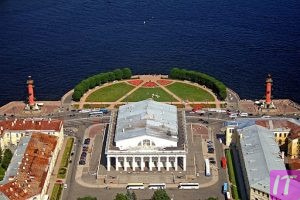
Geographical Significance of Vasilyevsky Island in St. Petersburg
Vasilyevsky Island holds considerable geographical significance as it forms part of the delta of the Neva River, situating it at a critical juncture within St. Petersburg. The island’s location makes it a focal point for both water and land transportation, contributing to its strategic importance in trade and connectivity within the city.
Covering an area of approximately 14 square kilometers, Vasilyevsky Island is one of the largest islands in St. Petersburg. The Neva River, which bifurcates the city, forms its northern and southern boundaries. This positioning renders the island highly accessible from various parts of the city, enhancing its status as a central district.
The island’s topography, characterized by flat terrain with an average elevation of slightly above sea level, has historically influenced its urban development. Early in its history, the low-lying nature of the island posed significant challenges, including frequent flooding. This necessitated extensive leveling and draining works during its initial stages of development under Peter the Great.
The proximity of Vasilyevsky Island to the Gulf of Finland further accentuates its geographical importance. This adjacency has historically facilitated maritime trade, acting as a gateway between St. Petersburg and international trading routes. The island’s port facilities and infrastructure have evolved in response to its strategic position, bolstering its role as a commercial hub.
In urban planning terms, the island’s location has led to its development into distinct neighborhoods, each with unique characteristics. The eastern portion of the island, often referred to as the Old Town or Stary Gorod, is the historical and cultural heart, while the western parts have seen more recent residential and commercial development.
The riverbanks of Vasilyevsky Island are adorned with embankments and promenades, offering picturesque views of the surrounding waterways. These features not only enhance the aesthetic appeal of the island but also play a crucial role in flood defense and urban landscaping. The embankments have been pivotal in shaping the urban form and function of the island.
The strategic bridges connecting Vasilyevsky Island to the mainland and other parts of St. Petersburg are integral to understanding its geographical significance. Iconic structures such as the Blagoveshchensky (Annunciation) Bridge, which was the first bridge built to connect the island to the mainland, exemplify the island’s connectivity.
Vasilyevsky Island’s geographical attributes also include several notable natural features, including parks and green spaces. These areas provide residents and visitors with recreational opportunities and contribute to the environmental sustainability of the island. Notably, the western coastline of the island integrates seamlessly with the broader urban green space network of St. Petersburg.
The island’s geographical significance is further cemented by its role in city planning and administration. The division of the island into smaller districts facilitates effective governance and the implementation of urban policies. This segmentation aligns with various functional and historical zones within the island, each contributing to the overall urban fabric.
Summing up, the geographical significance of Vasilyevsky Island is multifaceted, encompassing aspects of strategic location, topographical features, connectivity, and urban development. Its positioning within the delta of the Neva River and its accessibility have made it a linchpin in the geographical narrative of St. Petersburg.
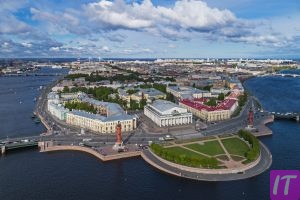
The Architectural Masterpieces of Vasilyevsky Island
Vasilyevsky Island boasts a plethora of architectural masterpieces that reflect the rich cultural heritage and historical evolution of St. Petersburg. These structures, ranging from grandiose imperial buildings to elegant residential quarters, encapsulate various architectural styles that have emerged over the centuries.
One of the most iconic architectural landmarks on Vasilyevsky Island is the Rostral Columns. Designed by architect Jean-François Thomas de Thomon in the early 19th century, these columns are situated on the Spit of the island and serve as navigational markers. Their distinctive design, adorned with ship prows, symbolizes the naval prowess of Russia.
The Kunstkamera, or Peter the Great Museum of Anthropology and Ethnography, is another architectural gem on the island. Established in 1727, it stands as one of the oldest museums in Russia. The building’s Baroque style, with its intricate detailing and grandiose façade, highlights the early 18th-century architectural trends.
The Twelve Collegia, originally intended to house the central government’s collegiate bodies, is a testament to the Petrine Baroque style. This architectural complex, designed by Domenico Trezzini, spans an impressive length along the Neva River and now serves as the main building of St. Petersburg State University. Its symmetrical design and expansive courtyards reflect the grandeur envisaged by Peter the Great.
Vasilyevsky Island is also home to several Orthodox churches that are architectural marvels in their own right. The Andreevsky Cathedral, built in the mid-18th century, showcases Elizabethan Baroque architecture. Its ornate decorations and towering spires make it a prominent feature of the island’s skyline.
The island’s residential architecture is equally notable, characterized by elegant townhouses and stately mansions. The Mendeleevskaya Line and the Kadetskaya Line feature rows of historical buildings that have been impeccably preserved. These residential quarters reflect the Neoclassical and Art Nouveau styles that were prevalent in the late 19th and early 20th centuries.
Several modern architectural projects have also contributed to the island’s evolving landscape. The reconstruction of the “Sevkabel Port” into a multifaceted cultural and business center exemplifies innovative urban redevelopment. This project harmoniously blends historical industrial architecture with modern design elements, making it a symbol of the island’s adaptive reuse of its architectural heritage.
The Vasilyevsky Island embankments are themselves architectural features of note. These meticulously crafted stone embankments, adorned with decorative elements, provide both functional infrastructure and aesthetic appeal. They also offer panoramic views of the Neva River and the city, becoming an integral part of the urban experience on the island.
Additionally, educational institutions on Vasilyevsky Island contribute to its architectural richness. Buildings like the Mining Institute and the Academy of Fine Arts are architectural landmarks that not only serve educational purposes but also embody historical architectural styles. Their grand facades and intricate interiors attract architecture enthusiasts from around the world.
In conclusion, the architectural masterpieces of Vasilyevsky Island reflect a diverse array of styles and historical periods. From Baroque and Neoclassical to modern adaptive reuse, these structures embody the rich cultural and historical narrative of St. Petersburg. Each building contributes to the island’s unique architectural landscape, making Vasilyevsky Island a living museum of architectural excellence.
Cultural and Educational Hubs on Vasilyevsky Island
Vasilyevsky Island is a cultural and educational nucleus in St. Petersburg, hosting some of Russia’s most prestigious institutions and vibrant cultural venues. These hubs play a pivotal role in the intellectual and cultural life of the city, fostering education, research, and artistic expression.
One of the most prominent educational institutions on the island is St. Petersburg State University, established in 1724. The university’s main campus occupies the historic Twelve Collegia building, an architectural marvel that has witnessed centuries of scholarly activity. The university is renowned for its contributions to various fields of knowledge, boasting an illustrious list of alumni and faculty, including Nobel laureates, statesmen, and intellectuals.
The Peter the Great Museum of Anthropology and Ethnography, or Kunstkamera, stands as a cultural cornerstone on Vasilyevsky Island. Founded by Peter the Great, the museum’s vast collections cover ethnography, anthropology, and natural history. It serves as both a research institution and a public museum, attracting scholars and visitors interested in Russia’s diverse cultural heritage.
Another notable educational hub is the Mining Institute, founded in 1773. The institute is one of Russia’s oldest engineering schools, specializing in mining engineering and geology. Its historical significance is accentuated by the institute’s museum, which boasts extensive collections of minerals, fossils, and mining equipment, showcasing the advancements in geological sciences over the centuries.
The Russian Academy of Fine Arts, located on the Spit of Vasilyevsky Island, is a prestigious institution dedicated to the visual arts. Founded in 1757, it has been instrumental in shaping Russian art and culture. The academy’s museum houses an exquisite collection of artworks, including paintings, sculptures, and graphic arts, reflecting the rich artistic traditions of Russia.
Cultural centers also abound on the island, with institutions such as the Erarta Museum of Contemporary Art playing a significant role. Erarta is the largest private museum of contemporary art in Russia, featuring works by contemporary Russian artists. It serves as a vibrant cultural venue, hosting exhibitions, performances, and educational programs that engage the public in contemporary artistic discourse.
Vasilyevsky Island’s cultural scene is further enriched by its theaters and performance spaces. The Island Theatre, known for its eclectic repertoire, presents a range of productions from classical dramas to contemporary plays. Additionally, the Vasileostrovsky Palace of Culture offers a venue for various cultural events, including concerts, dance performances, and exhibitions, contributing to the island’s dynamic cultural landscape.
Educational and research institutions on Vasilyevsky Island often collaborate with cultural centers, creating interdisciplinary platforms that foster innovation and creativity. Joint projects, seminars, and conferences frequently bring together scholars, artists, and cultural practitioners, promoting a vibrant exchange of ideas and fostering a robust intellectual environment.
The presence of numerous libraries on the island further enhances its educational and cultural offerings. The Maksimov Library, for instance, provides a rich repository of academic resources, supporting the research and educational activities of students and scholars. These libraries serve as essential hubs for intellectual engagement and scholarly pursuits.
In conclusion, Vasilyevsky Island’s cultural and educational hubs play an integral role in shaping the intellectual and cultural life of St. Petersburg. The island’s prestigious universities, museums, and cultural centers not only preserve and promote Russia’s rich heritage but also engage in cutting-edge research and creative endeavors. This dynamic interplay between education and culture positions Vasilyevsky Island as a vital center of intellectual and artistic excellence in Russia.
Vasilyevsky Island’s Role in the Development of the Russian Empire
Vasilyevsky Island has held a pivotal role in the development of the Russian Empire, serving as a hub of administration, education, and commerce. Its strategic location and the vision of Peter the Great established the island as an essential component of St. Petersburg and the broader empire.
Under Peter the Great’s reign, Vasilyevsky Island was envisaged as the administrative center of the newly-founded St. Petersburg. The construction of the Twelve Collegia building, intended to house the highest state bodies, marked the beginning of the island’s central role in governance. This architectural endeavor underscored the island’s significance in the administrative framework of the Russian Empire.
The educational institutions established on Vasilyevsky Island further contributed to its role in the empire’s development. St. Petersburg State University, founded in 1724, became a center of higher learning and research, producing generations of scholars and statesmen who played crucial roles in the empire’s advancement. The presence of such prestigious institutions fostered an intellectual environment that underpinned the empire’s progress in various fields of knowledge.
Vasilyevsky Island also played a significant role in the scientific and technological advancements of the Russian Empire. The establishment of the Mining Institute in 1773 exemplified this contribution, as the institute trained engineers and scientists who advanced Russia’s geological and industrial capabilities. The island’s focus on education and research facilitated the empire’s technological progress during the industrial revolution.
The island’s commercial significance cannot be understated. Its location at the delta of the Neva River and proximity to the Gulf of Finland made it a vital hub for trade. The construction of port facilities and warehouses supported maritime trade, connecting St. Petersburg to international trading routes. This commercial activity not only bolstered the island’s economy but also contributed to the empire’s wealth and influence.
Vasilyevsky Island’s role in the Russian Empire was further cemented by its involvement in various military endeavors. During the Napoleonic Wars and later conflicts, the island served as a strategic military site. Fortifications and military infrastructure on the island underscored its strategic importance in the defense of St. Petersburg and the broader empire.
The presence of diplomatic institutions on Vasilyevsky Island also played a role in the empire’s foreign relations. Various consulates and embassies were established on the island, facilitating diplomatic engagements and fostering international relations. This aspect of the island’s role contributed to the empire’s position on the global stage.
In the cultural realm, Vasilyevsky Island was a center of artistic and literary activity that influenced the cultural development of the Russian Empire. The Russian Academy of Fine Arts and other cultural institutions on the island nurtured artists and writers who shaped Russian culture. The island’s cultural output resonated throughout the empire, reinforcing its cultural significance.
Vasilyevsky Island’s infrastructure and urban planning played a crucial role in its development and integration into the empire. The construction of bridges and transportation networks facilitated connectivity and administrative efficiency. Urban planning initiatives on the island reflected broader trends in the empire’s approach to governance and development.
In conclusion, Vasilyevsky Island’s role in the development of the Russian Empire was multifaceted, encompassing administration, education, commerce, and culture. The island’s strategic location, coupled with Peter the Great’s vision and subsequent developments, positioned it as a vital hub that significantly contributed to the empire’s progress. This legacy of contribution continues to be reflected in the island’s contemporary status as a center of historical and cultural significance.
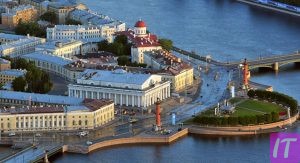
Key Institutions on Vasilyevsky Island: Universities and Museums
Vasilyevsky Island is renowned for its concentration of eminent institutions, particularly universities and museums, which have played a pivotal role in both the historical and contemporary intellectual life of St. Petersburg. These institutions not only provide educational and research opportunities but also act as custodians of cultural and scientific heritage.
The most prestigious academic institution on Vasilyevsky Island is St. Petersburg State University. Established in 1724 by Peter the Great, the university has become one of the leading institutions of higher education in Russia. The university’s main campus, housed in the historic Twelve Collegia building, offers a wide array of undergraduate and postgraduate programs. The university’s contributions to academia are significant, with numerous alumni achieving prominence in various scientific, literary, and political fields.
The Mining Institute, founded in 1773, is another key institution on the island. It is one of the oldest technical universities in Russia and specializes in mining engineering, geology, and related disciplines. The institute’s museum houses extensive collections that offer insights into the history of mining and geology, making it a valuable resource for researchers and historians.
The Russian Academy of Fine Arts, also located on Vasilyevsky Island, is an esteemed institution dedicated to the visual arts. Founded in 1757, the academy has nurtured many of Russia’s most prominent artists. The academy’s museum, featuring a comprehensive collection of Russian art, provides invaluable resources for students and scholars of art history.
Kunstkamera, or the Peter the Great Museum of Anthropology and Ethnography, is one of the most significant museums on the island. Founded in 1727, it is the first museum in Russia and one of the oldest in the world. The museum’s diverse collections span anthropology, ethnography, and natural history. It serves as both a research institution and a public museum, attracting visitors and scholars interested in the study of various cultures and natural phenomena.
The Erarta Museum of Contemporary Art is the largest private museum of contemporary art in Russia. Located on Vasilyevsky Island, Erarta focuses on works by contemporary Russian artists. The museum’s exhibitions, performances, and educational programs engage the public in contemporary artistic discourse, making it a vital cultural institution in the city.
Vasilyevsky Island is also home to the Oriental Studies Institute of the Russian Academy of Sciences. This institution conducts research in various fields related to Asian and African studies, including history, culture, and languages. The institute’s extensive library and archives provide crucial resources for researchers specializing in these regions.
The Zoological Museum, part of the Russian Academy of Sciences, is another gem on the island. Founded in 1832, it houses one of the largest natural history collections in Russia. The museum’s exhibits cover a wide range of zoological specimens, offering educational opportunities for students and researchers in the field of biology.
The island’s key institutions also include several specialized libraries that support academic and research activities. The Maksimov Library, for instance, provides extensive collections of academic resources, catering to the diverse
